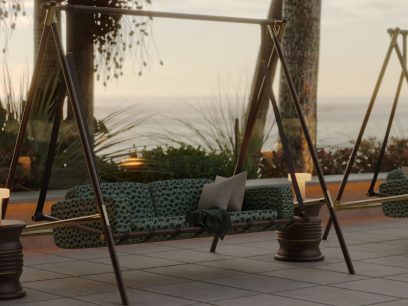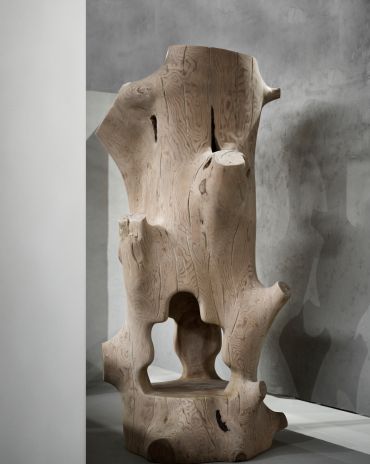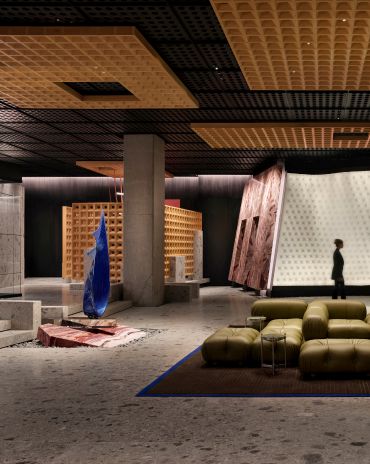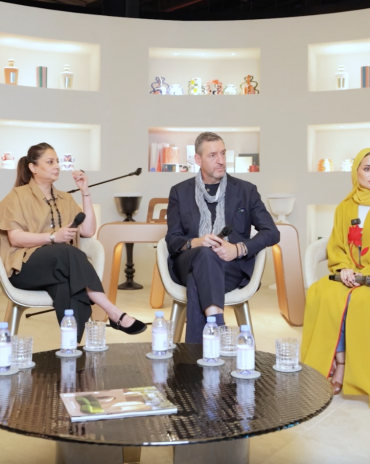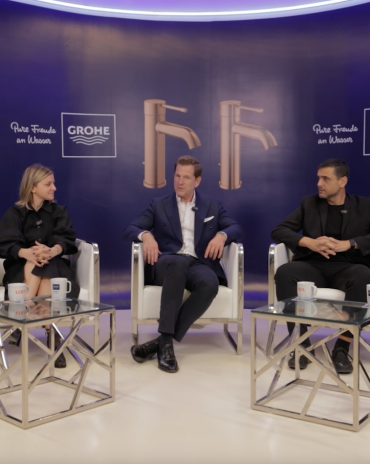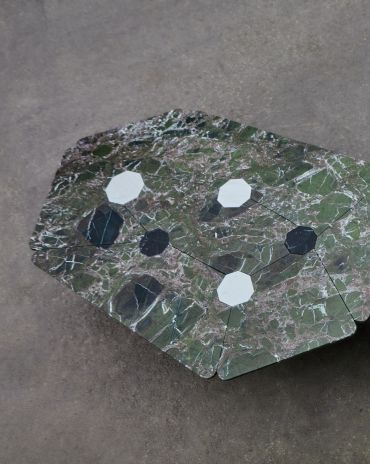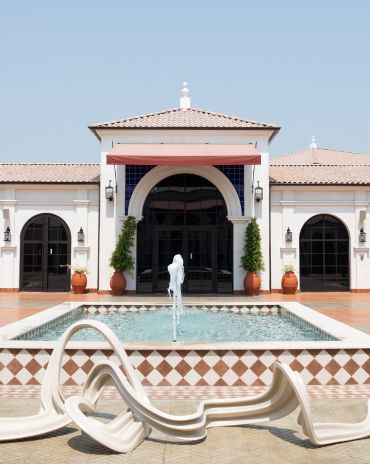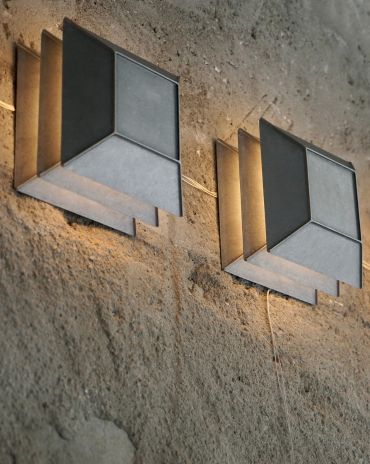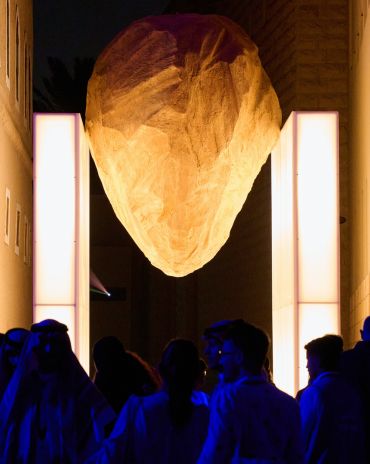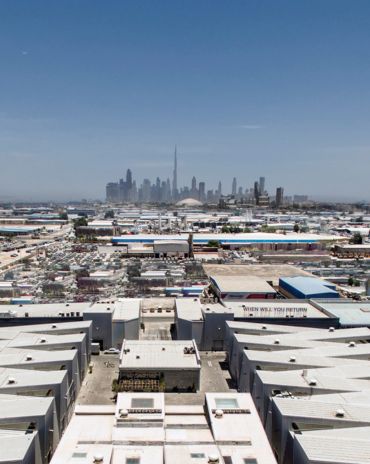Copyright © 2025 Motivate Media Group. All rights reserved.
51-1 Arquitectos has refurbished a former ice factory in Kalba into a cultural centre and artist residences for Sharjah Art Foundation
The Kalba Ice Factory is currently showing works by artists commissioned for the Sharjah Biennale
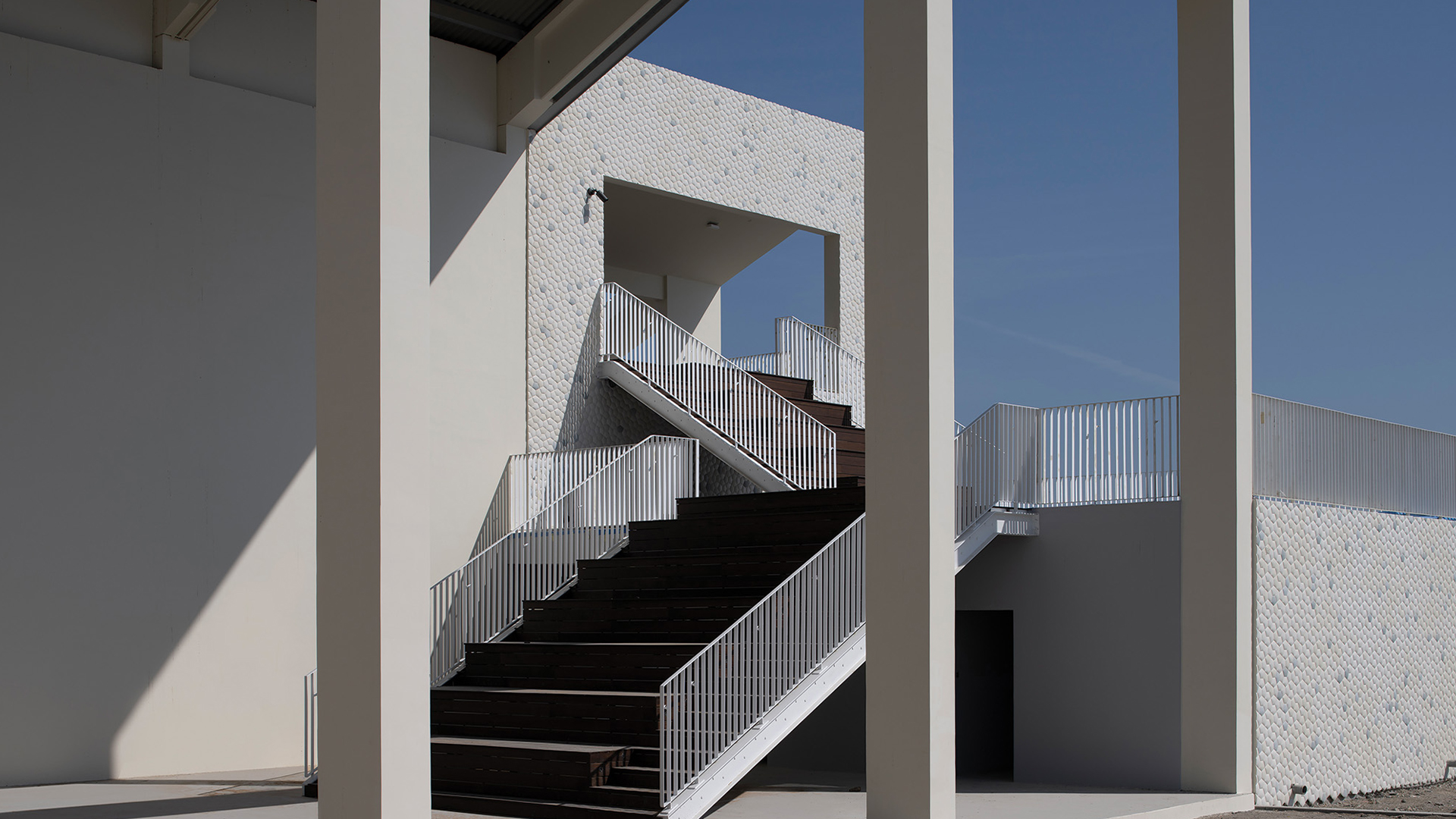
Located next to the Kalba Creek and the Al Qurm mangrove swamp in Sharjah’s east coast, amidst the rugged Hajar Mountains and the Gulf of Oman, is the Kalba Ice Factory: a former 1970s fish feed mill that was used by local fishermen to store ice for transporting freshly caught fish to Dubai. The derelict building – with a distinctive saw-tooth shaped roof – was acquired by the Sharjah Art Foundation (SAF) in 2015 and has since served as a site for its various interventions. Its recent renovation sees the abandoned 20,000-square metre building transformed into a cultural centre for Kalba by Lima-based 51-1 Arquitectos.
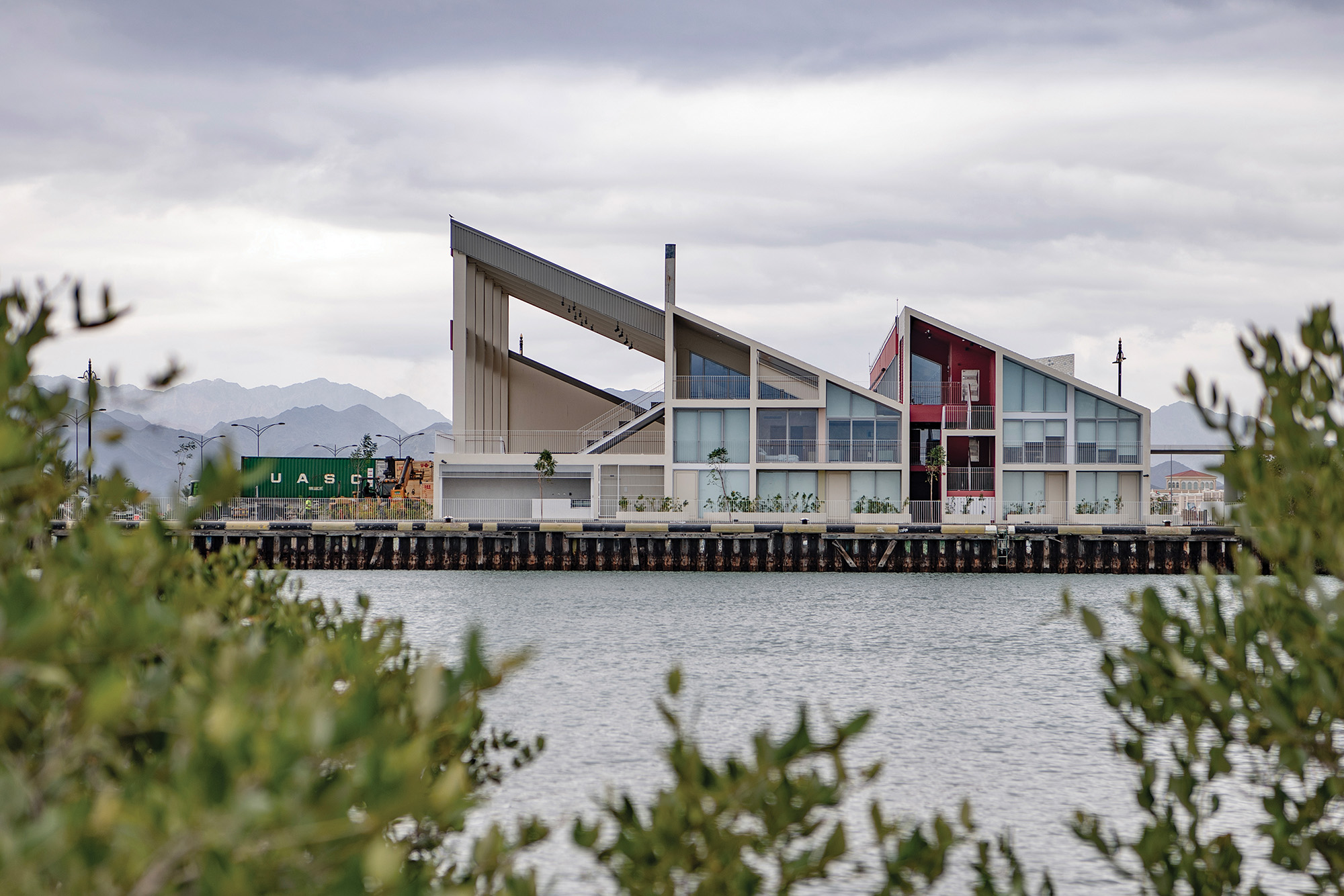
“By preserving the industrial rawness of the factory space and protecting the unique ecosystem of the surrounding landscape, this project extends the Foundation’s critical work [of] preserving sites of historic, cultural and environmental significance for future generations through adaptive reuse, and engaging communities across the emirate with contemporary arts programming,” says Hoor Al Qasimi, director of Sharjah Art Foundation.
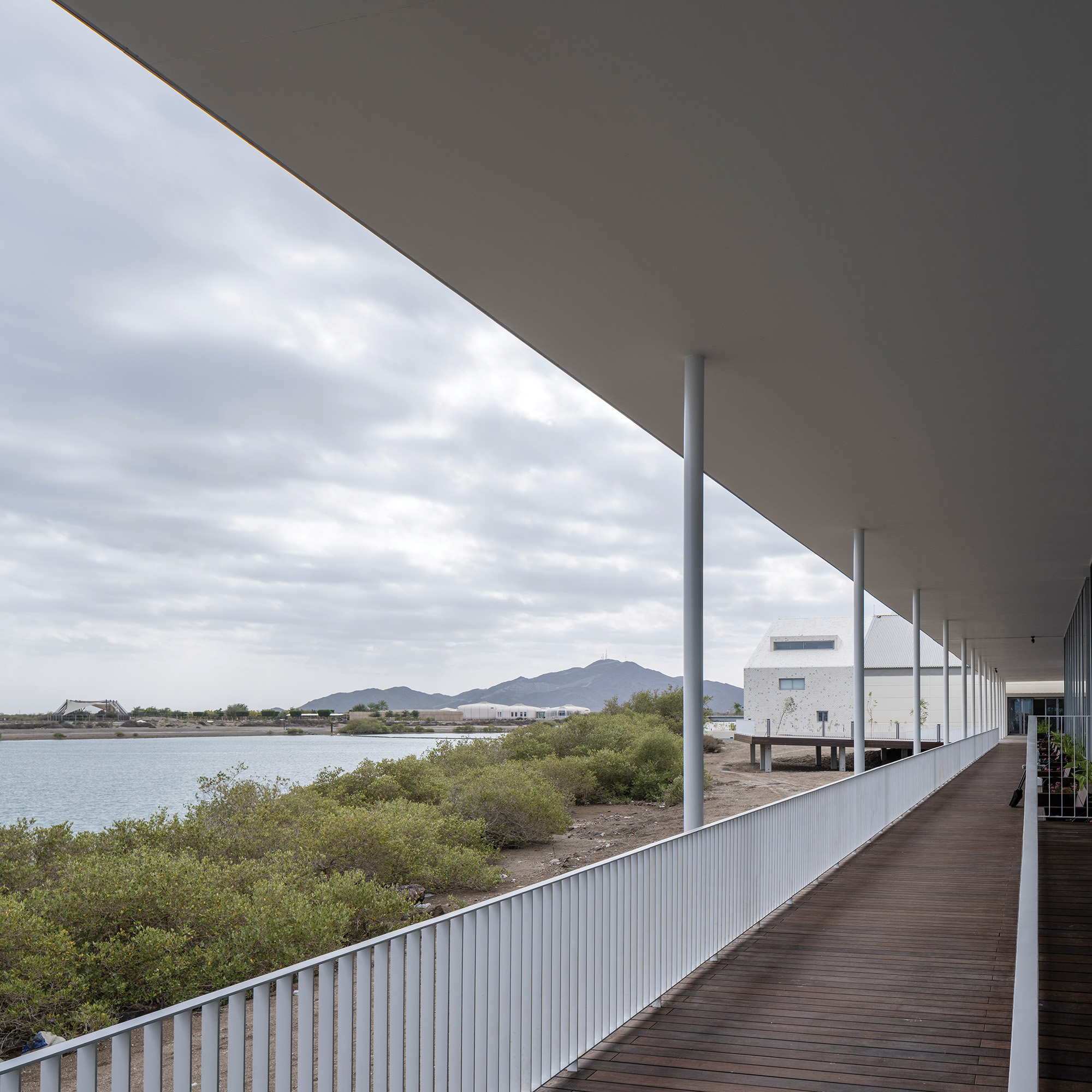
Since its opening – which coincided with the 15th edition of the Sharjah Biennale, under the theme ‘Thinking Historically In The Present’ (open until 11 June 2023) – the building has been used to feature the works of artists including Rebecca Belmore, Ibrahim Mahama, Pak Khawateen Painting Club, Doris Salcedo, Abdulrahim Salem, Kahurangiariki Smith, Inuuteq Storch and Nari Ward.
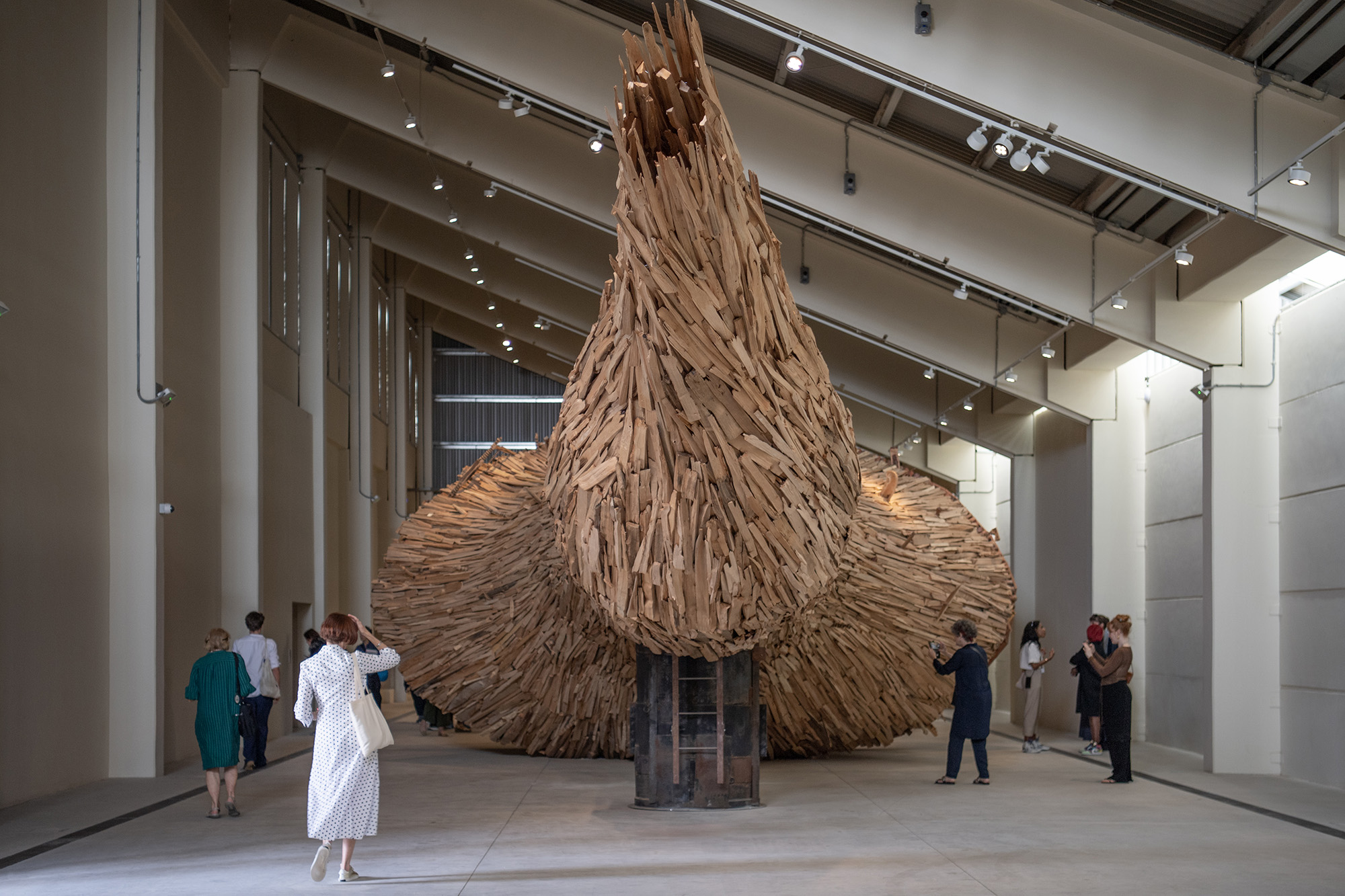
The architects behind the delicate renovation maintained a minimal level of intervention to the factory space – which makes up the main component of the cultural centre – thus allowing for large-scale temporary art installations to be set in its naves. They also maintained the building’s spatial qualities as an industrial ruin, restoring the roof which was almost destroyed and expanding the existing structure with the addition of six studios and living spaces for visiting artists, as well as stands and platforms for events and viewing the surrounding landscape. The extension utilises the same profile as the factory building, with a similar almost childlike silhouette, and overlooks the nearby mangrove forest.
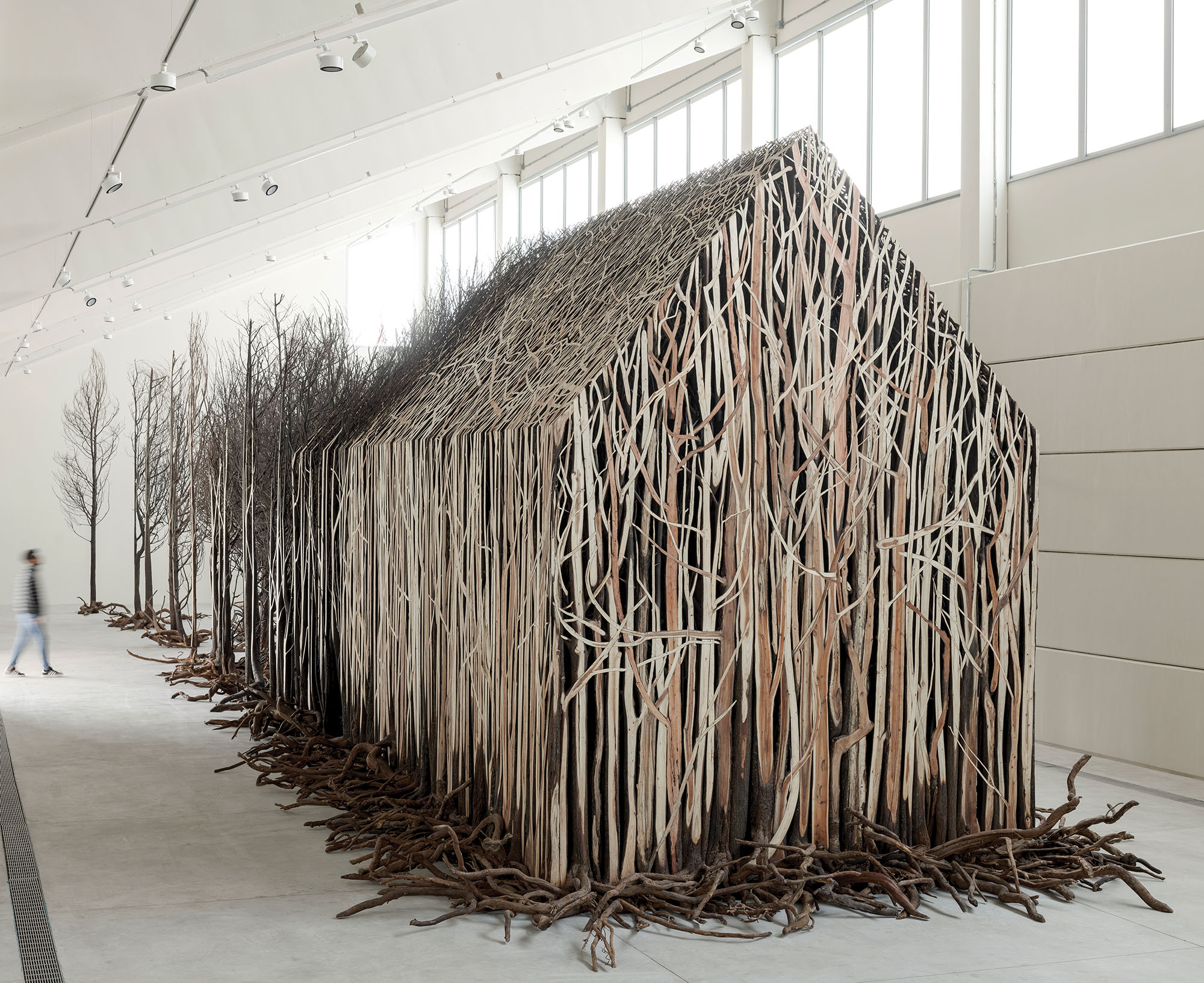
“Sheikha Hoor invited us to visit the site and we fell in love with the place, mainly because it felt very similar to the landscape of Peru – both are arid climates – and we loved all the remnants of the industrial site,” remembers Manuel de Rivero, partner at 51-1 Arquitectos. He insists that the industrial quality of the building was what charmed them the most, and it became their mission to preserve as much of that spirit as possible. “We also managed to utilise the roof, in order not to waste space and make sure every part of the building can be used while maximising the views,” he adds.
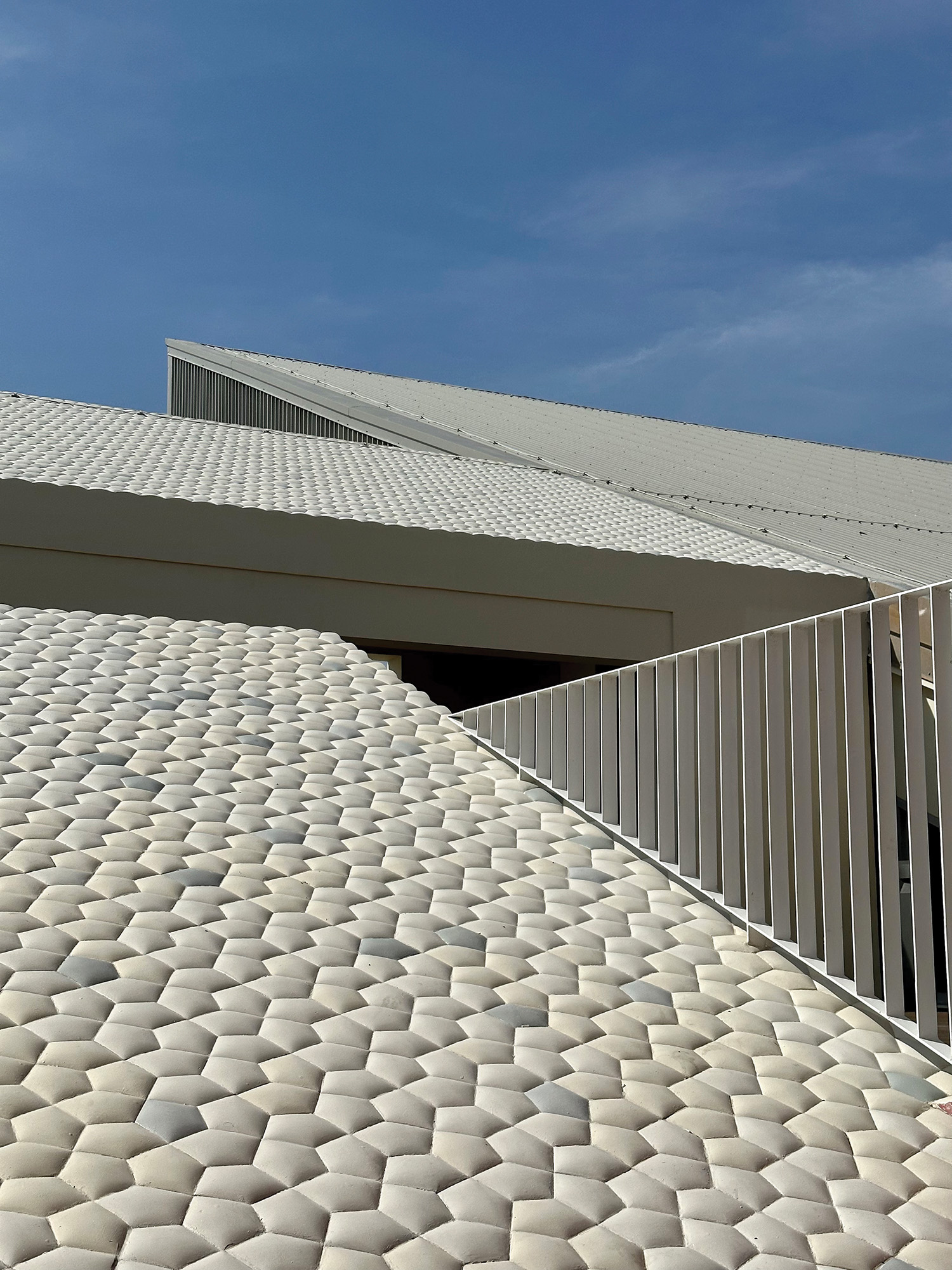
In front, an existing structure has been repurposed into a 200-square metre workshop space for artists, and directly behind the factory is a restaurant set on a long, shaded pathway, connecting to the creek. Inside, a large mirror runs across the space, facing the mangroves and reflecting the surrounding nature back into the interior space, so diners are connected to the natural environment, even indoors.
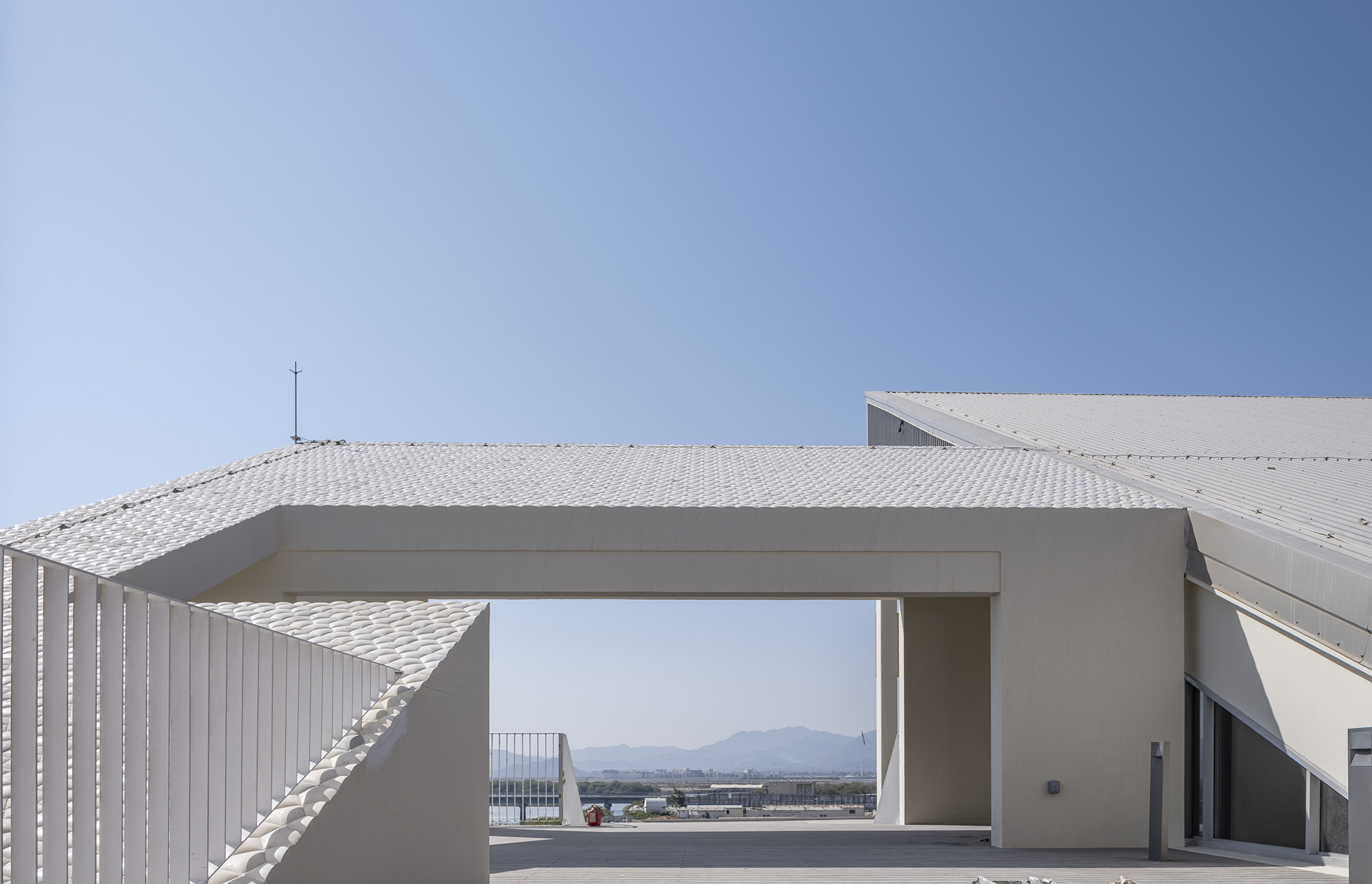
Separating the restaurant from the nearby road is an edible garden, featuring spaces for dining, cooking and playing. “We usually have gardens to enjoy looking at, but here we wanted to create something you could eat from, and where you could include tables for barbeques – something for the community [to enjoy],” says de Rivero.
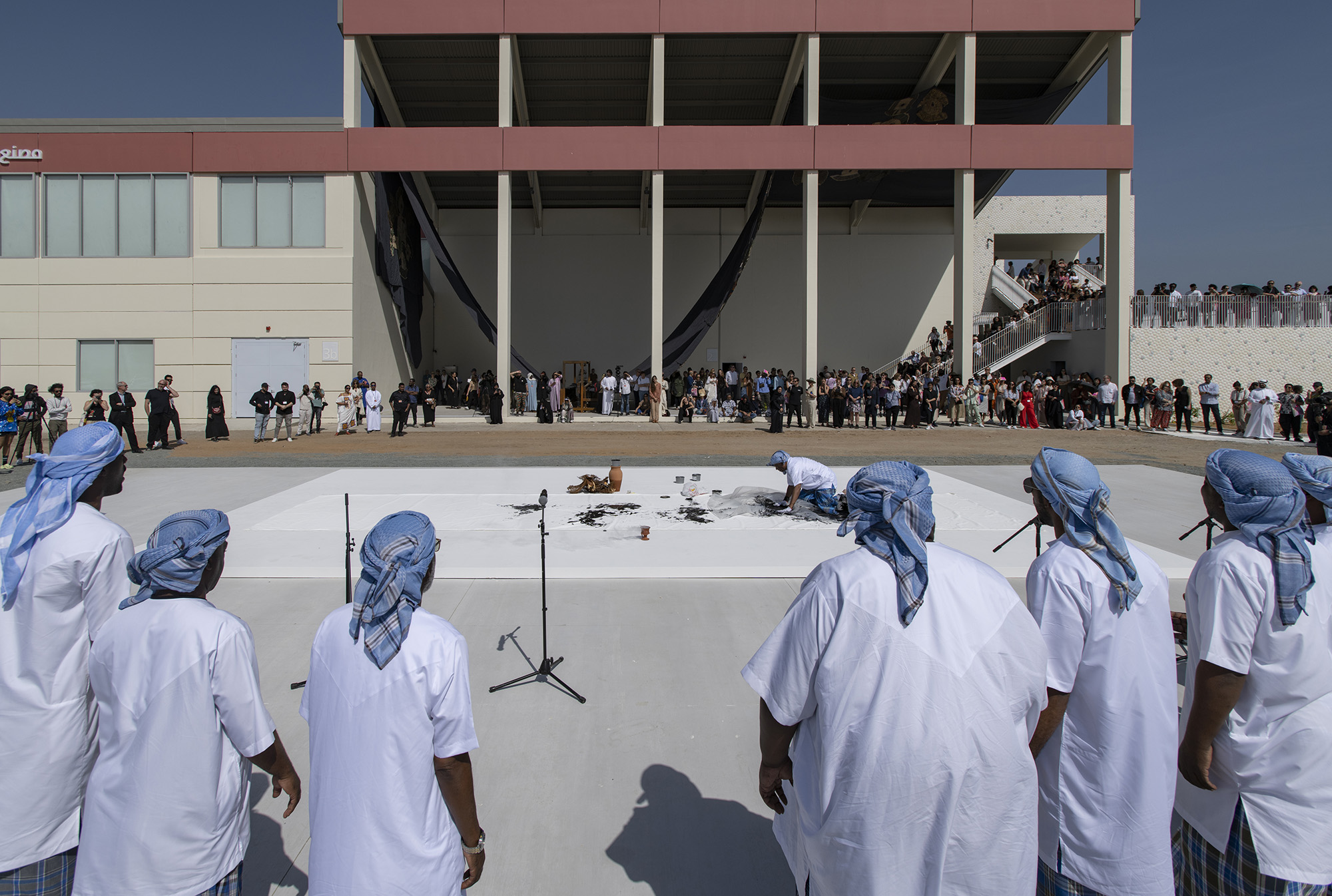
An elevated deck connects the parking spaces to the garden, the restaurant and the garden, where neem trees will soon line the entire route, connecting the various elements of the renovation. “There were a couple of palm trees that we thought [about] using – but SAF is very concerned with environmental issues, so they advised not to use the palms as they consume too much water for the shade they provide, so we used neem trees as an alternative,” the architect adds. The Kalba Ice Factory is located in an extremely biodiverse area of the emirate; green turtles which would come to nest on the nearby beach inspired the honeycomb-like shape of the ceramic on its façade, mimicking the forms of the hatches used to protect the baby turtles.
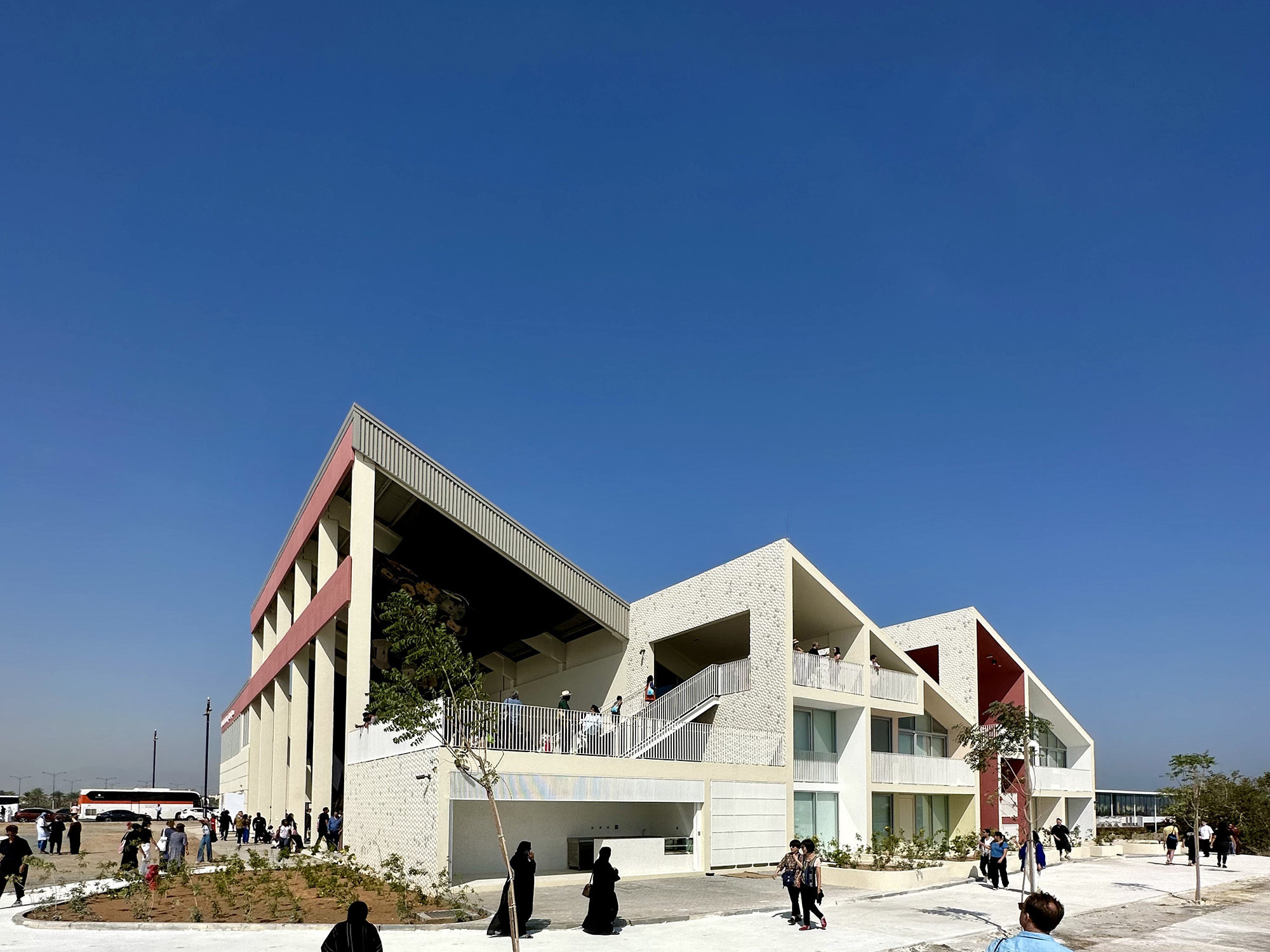
“When the sun hits the tiles, you get a reflection of colours, and it will only look better when it gets dirtier,” de Rivero asserts. “That’s the whole idea of the project: it should age well. Time should finish the work.”
Read more features here.
The Latest
Past Reveals Future
Maison&Objet Paris returns from 15 to 19 January 2026 under the banner of excellence and savoir-faire
Sensory Design
Designed by Wangan Studio, this avant-garde space, dedicated to care, feels like a contemporary art gallery
Winner’s Panel with IF Hub
identity gathered for a conversation on 'The Art of Design - Curation and Storytelling'.
Building Spaces That Endure
identity hosted a panel in collaboration with GROHE.
Asterite by Roula Salamoun
Capturing a moment of natural order, Asterite gathers elemental fragments into a grounded formation.
Maison Aimée Opens Its New Flagship Showroom
The Dubai-based design house opens its new showroom at the Kia building in Al Quoz.
Crafting Heritage: David and Nicolas on Abu Dhabi’s Equestrian Spaces
Inside the philosophy, collaboration, and vision behind the Equestrian Library and Saddle Workshop.
Contemporary Sensibilities, Historical Context
Mario Tsai takes us behind the making of his iconic piece – the Pagoda
Nebras Aljoaib Unveils a Passage Between Light and Stone
Between raw stone and responsive light, Riyadh steps into a space shaped by memory and momentum.
Reviving Heritage
Qasr Bin Kadsa in Baljurashi, Al-Baha, Saudi Arabia will be restored and reimagined as a boutique heritage hotel
Alserkal x Design Miami: A Cultural Bridge for Collectible Design
Alserkal and Design Miami announce one of a kind collaboration.
Minotticucine Opens its First Luxury Kitchen Showroom in Dubai
The brand will showcase its novelties at the Purity showroom in Dubai

